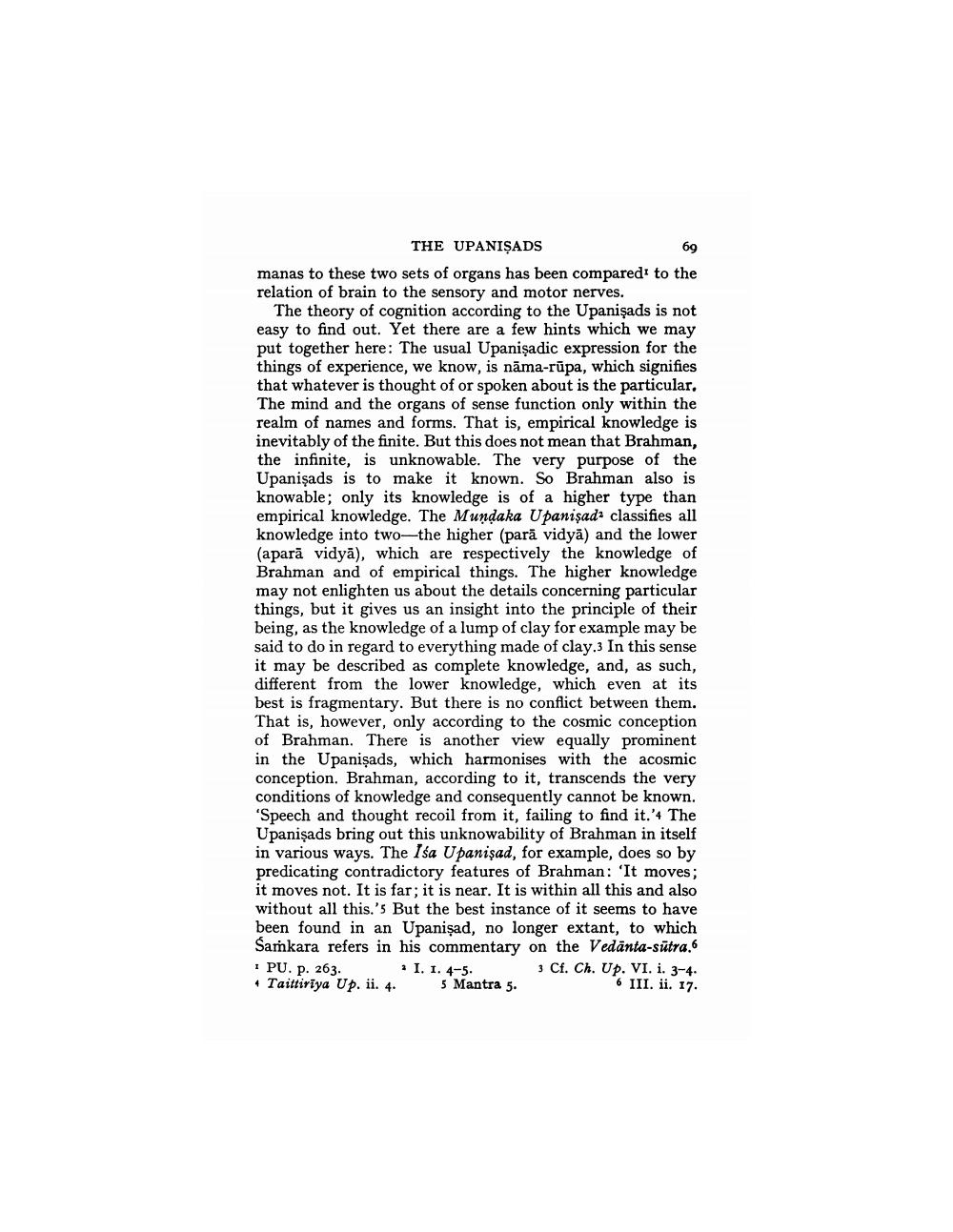________________
69
THE UPANIŞADS manas to these two sets of organs has been compared to the relation of brain to the sensory and motor nerves.
The theory of cognition according to the Upanişads is not easy to find out. Yet there are a few hints which we may put together here: The usual Upanisadic expression for the things of experience, we know, is nama-rūpa, which signifies that whatever is thought of or spoken about is the particular, The mind and the organs of sense function only within the realm of names and forms. That is, empirical knowledge is inevitably of the finite. But this does not mean that Brahman, the infinite, is unknowable. The very purpose of the Upanişads is to make it known. So Brahman also is knowable; only its knowledge is of a higher type than empirical knowledge. The Mundaka Upanisada classifies all knowledge into two-the higher (parā vidya) and the lower (aparā vidyā), which are respectively the knowledge of Brahman and of empirical things. The higher knowledge may not enlighten us about the details concerning particular things, but it gives us an insight into the principle of their being, as the knowledge of a lump of clay for example may be said to do in regard to everything made of clay.3 In this sense it may be described as complete knowledge, and, as such, different from the lower knowledge, which even at its best is fragmentary. But there is no conflict between them. That is, however, only according to the cosmic conception of Brahman. There is another view equally prominent in the Upanişads, which harmonises with the acosmic conception. Brahman, according to it, transcends the very conditions of knowledge and consequently cannot be known. 'Speech and thought recoil from it, failing to find it.'4 The Upanişads bring out this unknowability of Brahman in itself in various ways. The Isa Upanişad, for example, does so by predicating contradictory features of Brahman: 'It moves; it moves not. It is far; it is near. It is within all this and also without all this.'s But the best instance of it seems to have been found in an Upanişad, no longer extant, to which Samkara refers in his commentary on the Vedānta-sutra. PU. P. 263.
I. 1. 4-5. 3 Cf. Ch. Up. VI. i. 3-4. + Taittiriya Up. ii. 4. 5 Mantra 5.
6 III. ii. 17.




